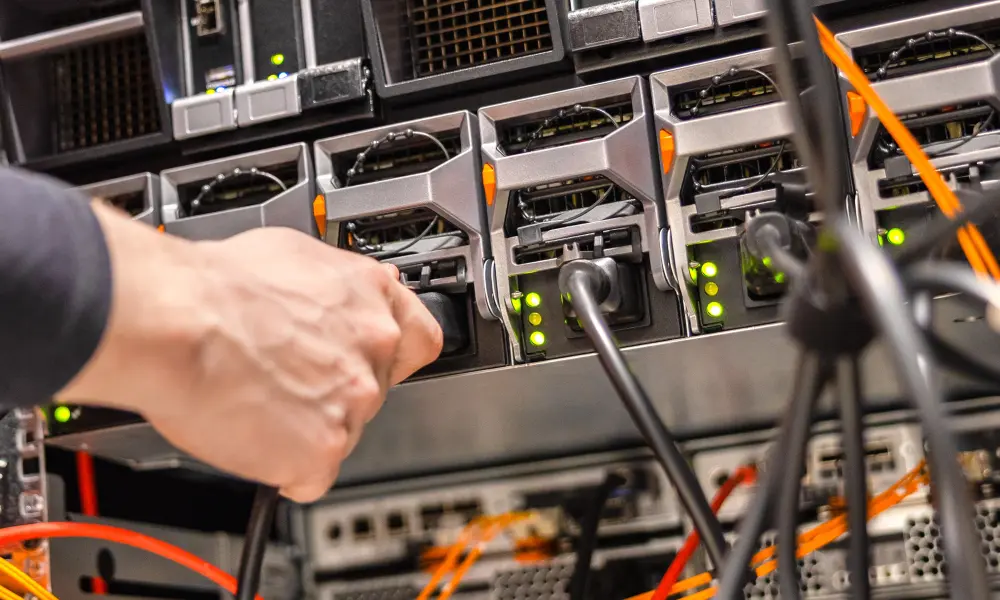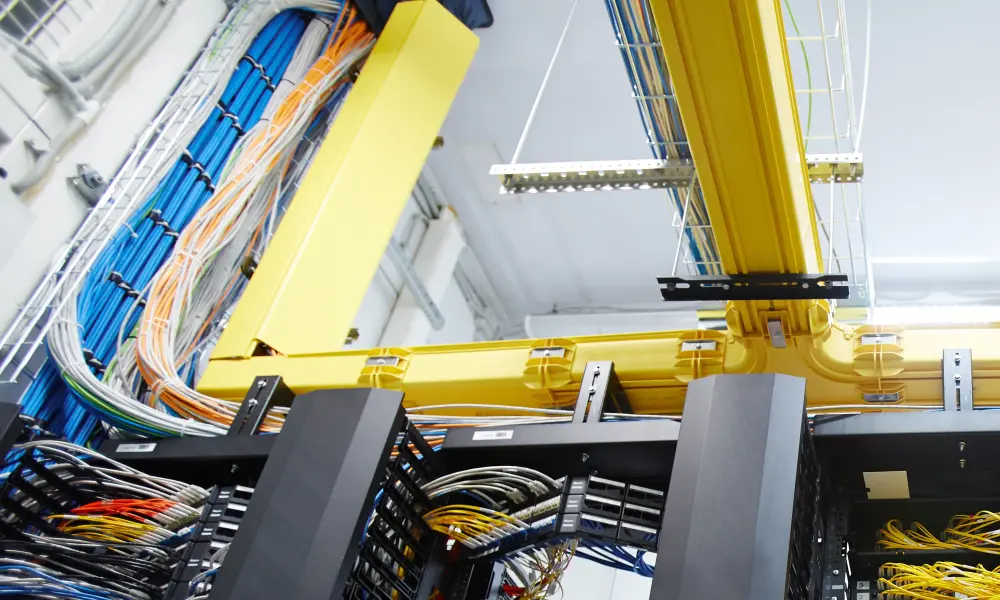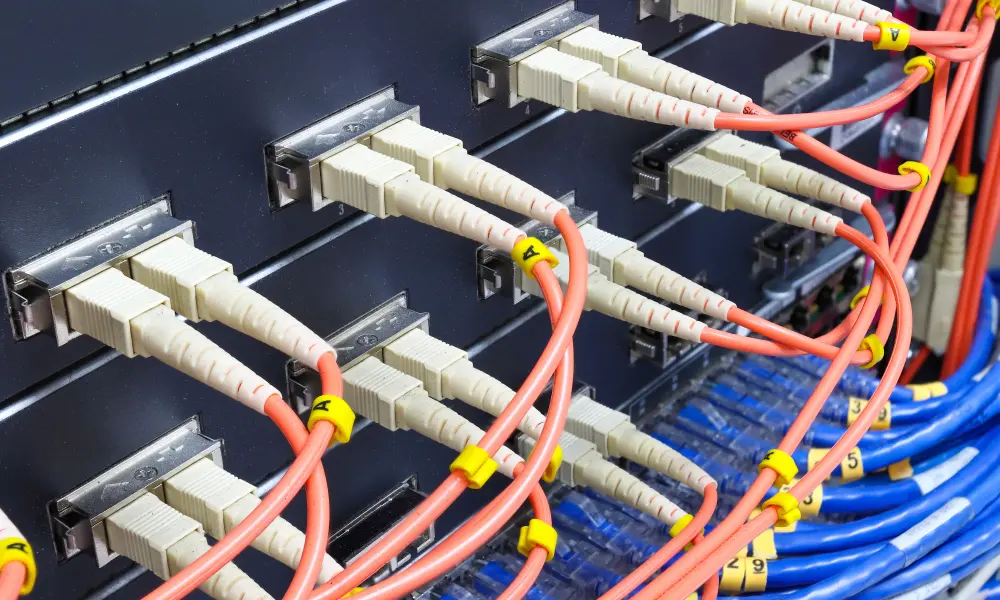Q&A With HELU: Cables for Data Centers
Data centers and their rapid construction in North America are pivotal to the digital transformation and technological advancement in the region. As the backbone of the internet and cloud computing, data centers are integral to storing, processing, and distributing vast amounts of data that power everything from daily online communications to critical infrastructure and cutting-edge research.
Both the U.S. and Canada have witnessed a significant surge in data center construction and expansion, driven by escalating demands for data storage, e-commerce, remote work, streaming services, and the Internet of Things (IoT). This growth is further fueled by advancements in artificial intelligence, machine learning, and big data analytics, requiring robust and scalable data infrastructure. As a result, data centers are increasingly recognized as crucial assets for economic growth, innovation, and national security, highlighting their strategic importance in the digital era.
One of the core components of data centers is the cabling and wiring infrastructure, which ensures the proper distribution of power and transmission of data within and outside the facility. This Q&A With HELU looks at the industrial cables and wires found in these facilities.

Power cables supply electricity to servers, cooling systems, UPS power generators, and other data center equipment. Where needed, the cables should be shielded to avoid data loss and errors.
Q: What types of cables are commonly used in data centers?
A: Data centers use various types of cables for different purposes, including:
- Power Cables: Heavy-duty power cables supply electricity to servers, cooling systems, UPS power generators, and other data center equipment. They need to be robust and reliable to handle high currents and ensure uninterrupted power supply. Backup power systems are typically located outside the facility and require cabling to be routed through underground conduit networks. Flexibility and small bending radii are also key as routing may occur in areas with tight spaces. For cables located within the data center, adequate shielding must be taken into account to avoid data loss and errors due to electromagnetic interference with the potential of a large volume of cables being in a confined space.
- Ethernet Cables: These cables are used for network connections within the data center, connecting servers, switches, and other network devices. Data transmission and speeds vary by category i.e. Cat 5, Cat 6, Cat 6a, etc. If the installation lengths are known these cables can come pre-terminated for plug-and-play or terminated during installation with field-terminable connectors.
- Fibre Channel (FC): These cables are typically optical fiber and are used within and between data centers, but can also be manufactured using copper conductors. They are capable of supporting data rates ranging from 1 to 128 gigabits per second. The industry now calls this Gigabit Fibre Channel (GFC), which is a high-speed data transfer protocol that provides in-order, lossless delivery of raw block data. The primary use of Fibre Channel is to connect computer data storage to servers in a commercial data center’s storage area network (SAN).
- Fiber-Optic Cables: These cables are used for high-speed data transmission over long distances. They are crucial for connecting data centers to external networks and for high-speed connections within the facility.
- Coaxial Cables: While less common in modern data centers, coax cables can be used for certain types of connections, including broadband internet.
Q: When creating cable specifications for data centers what are some of the factors to consider?
A: Several factors should be taken into consideration when selecting cables for a data center’s infrastructure. Depending on the needed speed and bandwidth, different categories of Ethernet or types of fiber optic cables are selected. The length of cable run also influences whether copper or fiber optic cables are used, as fiber offers lower signal loss over long distances.
Additionally, in areas with high electromagnetic interference (EMI), shielded cables might be necessary to avoid disrupting signal transmission. Both data and power cables should be durable to withstand the data center environment and flexible enough for easy installation and routing, and they should meet industry standards such as UL and CSA to ensure compatibility and reliability.
Finally, data centers often choose cables that exceed current requirements to accommodate future upgrades. While this may increase the upfront investment, as technology changes, the infrastructure is already in place to reduce long-term project expenses.
Q: How do data centers handle cable redundancy and failover?
A: Redundancy is critical in data centers to ensure continuous operation. This is typically achieved by using separate pathways for redundant cables to prevent a single point of failure, ensuring that redundant cables take different physical paths to minimize the risk of simultaneous failures, and deploying equipment that can utilize multiple cables simultaneously for load balancing and failover, which is known as active-active configuration.

Cable trays are utilized in data centers to support and organize the myriad of cables required for network and power connectivity, ensuring efficient and safe routing. This system not only enhances airflow and cooling efficiency but also simplifies maintenance and future upgrades by providing easy access to cables.
Q: How are cables managed and organized in data centers?
A: Cable management is crucial in data centers to ensure easy maintenance, improve airflow, and enhance safety. Methods include but are not limited to cable trays and ladders that provide pathways for routing cables efficiently and safely, and using vertical and horizontal cable managers within the racks to help organize the cables connected to various devices. Many data centers route the cables between the facility’s concrete slab (subfloor) and the raised access flooring in a sealed air space that is called a plenum. There are special UL approvals required for these types of cables, which focus on flame resistance characteristics. The approvals are UL DP-1 and DP-4 depending on the system.
Q: What are the best practices for cable installation and management in data centers?
A: Proper cable management is crucial for maintaining efficiency and scalability in data centers. Some best practices include: clearly labeling both ends of each cable for easy identification, using different colors to identify different types of cables or different services, which aids in quick identification and troubleshooting, and maintaining accurate documentation of all cabling infrastructure when performing maintenance or planning for the future. Furthermore, periodically testing cables ensure they are functioning correctly or are replaced if any are damaged/underperforming.

Q: Why is labeling and documentation benefit data center management?
A: Given the volume of cables and length of cable runs found in a data center having the proper labeling and documentation provides several benefits such as quick identification because labels, either alpha or numeric rings or custom-printed, adhesive labels can help quickly identify cables, which is essential during maintenance or when issues arise. On the topic of maintenance, knowing exactly where each cable leads can significantly speed up troubleshooting and reduce overall downtime. In terms of future growth, accurate identification and documentation helps in understanding the existing data center infrastructure, facilitating better planning for more efficient upgrades or expansions.
Q: What are the future trends in data center cabling?
A: As the reliance on the internet and cloud computing continues to grow the demand for data centers is only going to increase. Future trends as it relates to the electrical infrastructure include:
- Increased Use of Fiber Optics: As data rates continue to grow, the use of fiber-optic cables is expected to increase due to their higher bandwidth capabilities. This applies to the cable network both within and between data centers where the focus will be on higher bandwidth and lower latency. Fiber’s ease of use has greatly improved over time and since light signals are not distorted by EMI the cables don’t need to be shielded.
- Higher Category Ethernet Cables: Higher category Ethernet cables (like Cat 8) are becoming more prevalent as the demand for faster data transmission increases. Further adoption of Cat 8 and beyond as well as the connectors and hardware to facilitate an end-to-end system capable of supporting 25G/40G/100G connections will be necessary.
- Smarter Cabling Solutions: Intelligent cable management systems that provide real-time monitoring and management of the physical infrastructure are gaining traction. Knowing when an electric component will fail before it does is critical to maintaining a stable network that is always on line.
